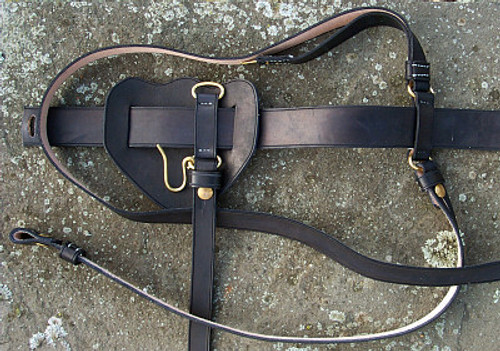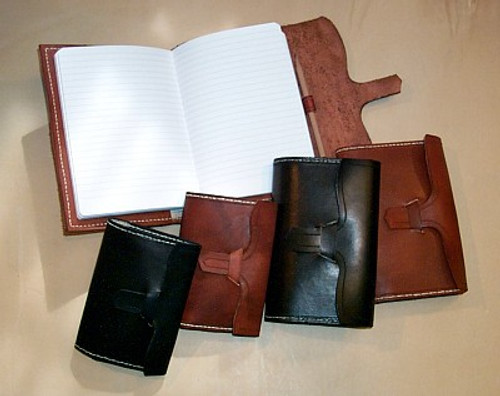Made from 5 oz. leather, 5/8" wide x 24" long , black with period style Japanned roller buckle. Edges are grooved. These are used on the 1864 US Regulation Softpack to secure the overcoat/bed roll to the top of the knapsack. Available in black.
Historical Citation
Roll Your Overcoat
by Private Pick Mattock
Private Pick Mattock is an alias for a retired Curator and Professional Historian from the Albany, NY area that has requested that his real name be withheld.
Prepare by unbuttoning the back waist belt, pulling the cuffs off the sleeves, and buttoning the body front and cape. Spread the coat out flat, buttons uppermost, on a clean, flat surface. Pat the coat flat, with arms outstretched straight from the shoulders. The two sides of the back center vent should be pulled together.
Kneeling at the bottom of the garment, fold the outer edges of the skirts inward to the center. Start the fold from the waist or above, and form a long, narrow, tapered triangle to the bottom hem. The width of the skirt is now the width of the shoulders. This will be the finished width of the rolled overcoat. In other words, you should end with a rectangle of cloth the width of the shoulders.
Fold the bottom of the skirt upward just far enough so that the center back vent is now on top of the flat pile. Now go to the top of the garment.
The cape should be pulled away from the body, spread as wide as it will go, and lying upon itself. It should look like a big, blue, open Chinese fan.
Fold the outer edges of the cape toward the center and pat flat. The new edges should fit inside the width of the shoulders. Fold a sleeve from the shoulder seam across the body, parallel with the top of the shoulders and pat it flat. Now fold near the cuff, back upon itself, toward its own shoulder, so that the second fold is inside the width of the shoulders. Do the same with the second sleeve.
Turn the folded cape down over the folded sleeves. The stand-up collar will be in the way. Fold the collar and possibly even the shoulders over the sleeves, to make a neat flat pile. Experience will soon teach you the neatest way to do this.
Beginning at the shoulders, slowly roll the rectangle up toward the bottom hem, rolling tightly and smoothing out any wrinkles or bulges. (Depending upon how your garment was tailored, you may have to fudge quite a bit here. You will soon be guided by your own experience.) You should finish up with a Saxony blue, kersey, tootsie roll.
Strap the roll to the top of your knapsack. The folded bottom edge of the coat, or the free end of the roll, should be hidden against the top of the knapsack. The rear waist belt, now re-buttoned, should face to the rear, or perhaps to the top. (The sergeants will soon notice and make everyone do it the same way.) Of course, the proud soldier will take care that the eagle buttons are upright.
The leather overcoat straps can be passed through the waist belt loops, to give a pleasing effect. The veterans among you know that the overcoat straps are passed underneath the knapsack's shoulder straps. This will hold the roll and the top of the knapsack close to the shoulders, and make the load ride much easier.
The proud soldier will take care that the overcoat strap buckles are set at the same height, not left any old way. The ends of the strap should be tucked beneath the roll and the top of the knapsack. Others might wish to roll up the leather straps upon themselves to form disks, riding upon the top of the roll.
Notice I said "overcoat straps". That's what they are. That's what the Quartermaster called them. Obviously the overcoat was meant to be carried on top of the knapsack. In inclement weather it could easily be removed and put on. Just as obviously, the blanket was meant to be carried sheltered inside the painted cloth of the knapsack, in the square receptacle next to the wearer's back. This kept the blanket as dry as possible. It softened the load pressing against the wearer's back by cushioning all the brushes, hatchets, eating utensils, etc. carried in the knapsack's outer pouch. Makes sense doesn't it?
P.S. I know you are going to say that you have seen many 1860's photographs of soldiers showing blankets worn on top of the knapsack. I've seen them, too.











